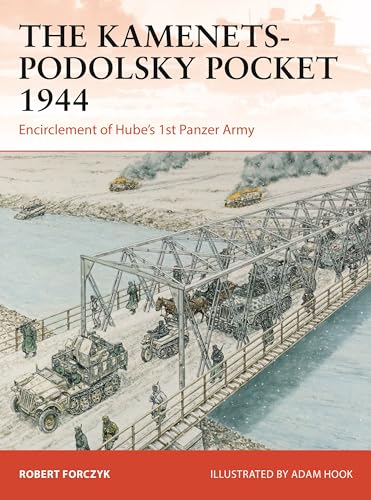
Unknown Generals - German Corps Commanders In World War II
by Major French L. MacLean
Popularity
4.39 / 5
* A book's popularity is determined by how it compares to all other books on this website.
Where to buy?
Buy from Amazon* If you buy this book through the link above, we may receive a small commission at no extra cost to you.
Unknown Generals - German Corps Commanders In World War II by Major French L. MacLean
Details
War:
World War II
Perspective:
Commanders
Military Unit:
Wehrmacht
True Story:
Yes
Biography:
Yes
Region:
Europe
Page Count:
179
Published Date:
2014
ISBN13:
9781782895220
Description
Brief Summary
Unknown Generals - German Corps Commanders In World War II by Major French L. MacLean provides a meticulous historical analysis of 332 German corps commanders who served on various fronts during World War II, including the Eastern, Italian, and Western fronts. The book delves into their backgrounds, leadership attributes, and performances based on comprehensive historical records. It evaluates factors such as education, prior military experience, and political influence, concluding that successful commanders were generally well-educated and capable of independent action, with political considerations playing a lesser role in their appointments. The study notes that no single front had a disproportionate number of successful commanders.
Main Themes and Topics
The primary theme of Unknown Generals revolves around the leadership attributes and backgrounds of German corps commanders during World War II. It examines various factors contributing to their effectiveness in command roles, such as education, prior military roles, and the capacity for independent decision-making. MacLean's analysis aims to highlight that despite the common perception of political machinations within the Nazi military hierarchy, professional merit was a decisive factor in the appointment of corps commanders. The book also discusses the distribution of capable commanders across different fronts, dispelling the notion that any one front had a concentration of superior leadership at the expense of the others.
Writing Style and Tone
Major French L. MacLean adopts a scholarly and analytical writing style, befitting the book's historical focus. The tone is objective and fact-driven, as MacLean meticulously lays out the data and records pertaining to each officer's experience and leadership during the war. Although the subject matter is complex, MacLean writes with clarity, making the book accessible to both military historians and general readers interested in World War II leadership dynamics.
Criticism
One area of criticism could be the book's dense and data-heavy presentation, which might be challenging for readers seeking a more narrative-driven account of World War II. While the rigorous analysis provides depth, some readers might find the extensive focus on military records somewhat dispassionate. Additionally, those looking for personal stories or an exploration of individual personalities among the commanders might feel that the book does not delve deeply enough into these aspects.









